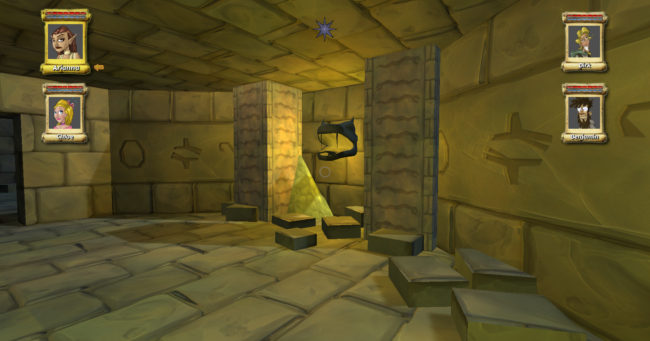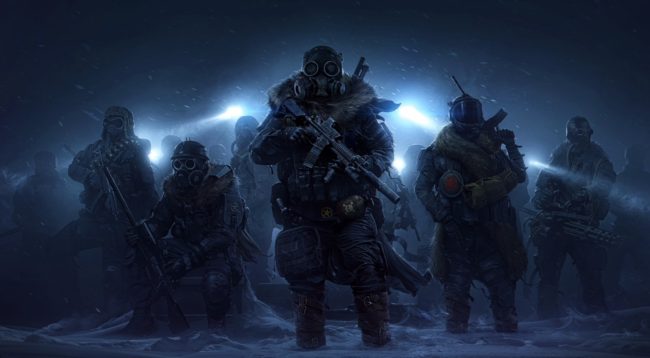The Day Job, Fatigue, and FK2
Posted by Rampant Coyote on October 26, 2016
The suckiest part of taking time off of work with a project-based job is that when you come back, the work is all still there. Plus more. Plus people with dependencies on you getting your work done so they can get theirs done.
Kinda takes the fun out of taking time off.
I’m not being too careful with my remaining hours, although taking some time to watch a show or play a video game might be considered really good use of time to get some R&R. I’m not sure yet. Blog posts are difficult, but I’m doing what I can. I have a bunch of half-written old ones, but for the most part, I quit writing them because they weren’t going anywhere.
On the FK2 side… well, it’s been slow, but progressing. How about a work-in-progress screenshot? Sure, that sounds cool:
Have a great one!
Filed Under: Frayed Knights, Geek Life, Rampant Games - Comments: Comments are off for this article
Superhero – Not Just a Genre
Posted by Rampant Coyote on October 24, 2016
Last week, the trailers (well, a teaser and a trailer) to two new superhero movies dropped. Or at least, movies from the same superhero-laden comic book universe. Both are action movies. But they couldn’t be more different in style or tone.
First off, Guardians of the Galaxy 2:
Next, Logan (AKA Wolverine 3):
Apparently Logan is shooting for an R-rating, and is based on an eight-issue comic series entitled “Old Man Logan.” The mutants are mostly dead, Logan’s healing power is fading and his age is thus catching up to him, and Xavier is suffering from Alzheimer’s.
On top of all this, I’ve been non-binge-watching (NO TIME!!!!) Netflix’s Luke Cage:
And then of course, next week, Doctor Strange hits theaters. I already have my tickets to a special viewing.
If I were to ignore the fact that these all come from the same Marvel Comics universe … and even ignore the “super-powered” part of them, having not seen them I might label these Space Opera / Comedy, Dystopian or Dark Future, Gritty Crime Drama, and Epic Contemporary Fantasy. Or something like that. I’m not 100% up on marketing labels for subgenres these days.
I have a number of thoughts on all this. First of all, there’s the thought that I must have made a wish with a genie back when I was 13 that finally came true. There are so many movies that have come out in the last decade or so that are based on comics or at least inspired by comics that do not suck. I do not want to talk about what passed for a superhero movie or TV series back when I was a kid. (Well, okay, The Incredible Hulk and Six Million Dollar Man were popular, but…) Just like the state of fantasy films, there just wasn’t much of quality out there.
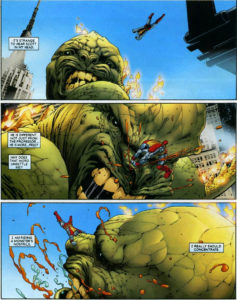 A major second point that seemed to have been forgotten until the 2000s: ANY story is about characters. The titles I followed back in the 1980s were as much about the relationships between these characters as the fight scenes. They were angsty and over-the-top, just like any soap opera, with the fight scenes serving as a catalyst or catharsis or some other nice turning point to give the characters something new to argue about.
A major second point that seemed to have been forgotten until the 2000s: ANY story is about characters. The titles I followed back in the 1980s were as much about the relationships between these characters as the fight scenes. They were angsty and over-the-top, just like any soap opera, with the fight scenes serving as a catalyst or catharsis or some other nice turning point to give the characters something new to argue about.
The spectacle of the fantasy powers was a big deal… it was what made these stories interesting to me in the first place. But while I came for the action, I stayed for the characters. Sadly, for years, it seemed like the comics had figured that out but the movies–which should have known better–had not. (Sadly, the comics sometimes go too far in that direction). But now, if you check out those trailers, they are all very heavily character and relationship based. The Doctor Strange trailer goes a bit further into the high-concept area, which … well, in a way, that does define Doctor Strange’s character.
The most important part, though, is that while I tend to think of “superhero” as its own little genre, it’s not. Netflix kinda nailed this one by labeling Daredevil as “Crime Drama” and Jessica Jones as “Psychological Thriller.” Just like science fiction (and fantasy) should really be more of a setting than a genre. The golden-age superhero comics were really just derivatives of popular pulp fiction, after all. Superman was really just something of a combination of Clark “Doc” Savage (the Man of Bronze) and an inversion of John Carter (instead of an Earth man going to an alien world and gaining super powers and able to leap tall buildings in a single bound, it’s an alien coming to Earth and gaining those same powers). And of course, Batman came from pulp mystery and detective stories.
So yeah. I’m glad to see this kind of expansion. If nothing else, it keeps things interesting.
Filed Under: Movies - Comments: Comments are off for this article
The Rocksmith Concert at Slims – Footage
Posted by Rampant Coyote on October 21, 2016
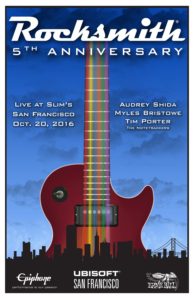 There may be a better version being produced by Ubisoft (I would expect as much), but here’s footage from the Rocksmith concert last night, courtesy of The Riff Repeater:
There may be a better version being produced by Ubisoft (I would expect as much), but here’s footage from the Rocksmith concert last night, courtesy of The Riff Repeater:
https://www.periscope.tv/TheRiffRepeater/1DXGyonLzXkxM
The action gets going about 16 minutes in, with the “Bachsmith” arrangement of Beethoven’s Ode to Joy played by the Notetrackers. The main event begins a little more than an hour in, with an introduction by Dan Amrich, and then guitarists trained by the game strutting their stuff.
The quality’s not great, but it looks and sounds like it was a fantastic show!
Filed Under: Events, Guitar Games - Comments: Comments are off for this article
Halloween Film Impressions: Housebound
Posted by Rampant Coyote on
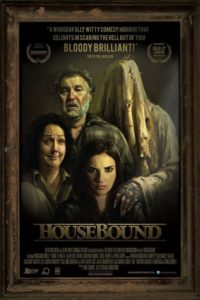 We watched Housebound, a film out of New Zealand and another Netflix show. I didn’t realize that it was a horror-comedy. It definitely sits on the “black comedy” side of things, so don’t expect light laugh-a-minute fare. It’s not rated, but in the U.S., it would be rated R for the blood, gore and language.
We watched Housebound, a film out of New Zealand and another Netflix show. I didn’t realize that it was a horror-comedy. It definitely sits on the “black comedy” side of things, so don’t expect light laugh-a-minute fare. It’s not rated, but in the U.S., it would be rated R for the blood, gore and language.
It’s about a girl, Kylie, a petty criminal who gets busted yet again and sentenced to house arrest at her mother’s house. Her mother is not altogether there, and believes the house is haunted. Kylie, too, has memories of it being haunted, but as an adult refuses to believe in the supernatural. But when strange things begin happening anew, Kylie begins to admit that the house may indeed be haunted, and that something evil is stirring once again.
The characters in the show are really what makes the film. Kylie, the central character, isn’t an innocent victim. Her reaction when asked about encountering the supernatural is to “smash it in the face.” Her mother and Amos, the private security guard, become increasingly endearing and interesting characters as the show progresses. And there are plenty of twists and turns to keep it from being anything like just another haunted house story.
Anyway, if you don’t mind the casual use of the F-word (which is a lot more casual in New Zealand than it is in the U.S.), or the use of things like spurting blood as a source of humor, it’s a very good low-budget horror movie. I’d recommend it.
Filed Under: Impressions, Movies - Comments: Comments are off for this article
Time off, and time on
Posted by Rampant Coyote on October 20, 2016
I have a couple of days off, to match the time off that my daughter and my wife have off. Things at Ye Olde Day Jobbe have been pretty nuts. Good nuts, but exhausting. I know I can use the time off to spend the time with my family, and get some writing and game development done. Go me!
Okay – catch up time. More of a reiteration of stuff, but here goes:
#1 – I’ll be showing off Frayed Knights 2: The Khan of Wrath at The Leonardo on November 11th from 7:00 to 10:00 PM. Honestly, I’m so tired of that demo level that I really, really wanted to re-purpose an existing new level to show… but that just meant a whole lot of additional work to make a poor 5-10 minute introduction to the game. A pretty useless endeavor and wasted effort. The first level of the game really is a solid introduction, as it was designed to be, and so while I’m tired of it, not many people have played it, so we’ll keep with that. It’ll sport some improved special effects and a mini-map, some bug fixes, and some features that might be disabled so as not to get too confusing for a demo. But otherwise, the same thing. But if you HAVE NOT yet played it, I’ll be there with several other Utah Indie Game developers at the Leonardo Museum. Come check out the museum and check out some games! The Leonardo is at 209 E 500 S, Salt Lake City, UT. (I’m personally hoping to sneak away for a few minutes and check out their new Flight exhibit).
#2 – I have a story called The Priests of Shalaz which will be published in the winter issue (#4) of Cirsova Magazine, coming out at the beginning of December. Issue #3 is out now!
#3 – I have another short story due out before the end of the year in an anthology, but details aren’t ready to announce yet.
#4 – I will be at the Utah Winter Faire on December 2nd – 4th, selling and signing books. Hopefully I will have copies of Cirsova #4 by then to sell as well. 🙂
Aside from that… I’m pretty much going to be living at the office until Thanksgiving. Again, it’s a good kind of busy (CONTRACTS! NEW DEVELOPMENT! COOL TECHNOLOGY!) but it’s long, long hours. Ugh. Expect Blog posts to continue to be not-quite-every-weekday as they have been the last three months. There are simply not enough hours in the day.
Filed Under: Events, Rampant Games - Comments: Comments are off for this article
Rocksmith Live at Slim’s on Thursday Night
Posted by Rampant Coyote on October 18, 2016
 If you live in the Bay area, this might be something cool (and FREE) to attend:
If you live in the Bay area, this might be something cool (and FREE) to attend:
ONLY grab tickets if you are sure to be there, as seating is limited. (I’m worried how many trolls might claim tickets with no intention of showing up… they probably should have charged a couple of bucks).
Anyway – should be cool I assume they’ll be broadcasting the whole thing via their Twitch channel at https://www.twitch.tv/rocksmithgame. While definitely cool, it’s a big marketing event to demonstrate to the world that yes, the game works. Those of us who have put some serious play-time into it already knew that, but even if the questionable claim that it is “the fastest way to learn guitar” is true, it still takes years of effort to go from newb to being able to perform challenging pieces live in front of an audience. They’ve had five years, so now they are strutting their stuff.
You could win a limited edition @Epiphone guitar by helping @VH1SavetheMusic this Thursday. Join us: https://t.co/ICq8mX3b7P #Rocksmith5th pic.twitter.com/1dEja9AiUt
— Rocksmith (@Rocksmithgame) October 18, 2016
As for me, I’m enjoying the Remastered edition quit well. Primarily, I love the new song lists and Riff Repeater options. Assuming it is broadcast, I’m looking forward to the show.
Filed Under: Guitar Games - Comments: Comments are off for this article
Mapping my Own Creative Process – How I (Don’t) Work
Posted by Rampant Coyote on October 17, 2016
 I think I’ve discovered something about how my brain works. I don’t know if it’s cool or stupid, or just plain weird. All three, probably. Except cool. Maybe it’s cool that I’m finally figuring it out, and now I just need to know how to adapt to it.
I think I’ve discovered something about how my brain works. I don’t know if it’s cool or stupid, or just plain weird. All three, probably. Except cool. Maybe it’s cool that I’m finally figuring it out, and now I just need to know how to adapt to it.
I’ve been Game Mastering RPGs for local groups since I was 12 years old. While I’d sometimes run game modules, I loved designing my own adventures. What I’ve found is that it’s very hard for me to come up with a nice top-down design from the get-go. I work best thinking in terms of scenes and vignettes. I have to basically put my brain into the thick of these cool battles and adventures, see them in my minds eye, and then figure out a way to chain them together and give them structure. It’s like trying to make sense of a dream after you wake up. These connections foster creativity for other ideas. My best designs are bottom-up.
When I’m designing video games – particularly an RPG – I have the same problem, which makes it very difficult to organize a project from front – end. Again, I work best when I’m down in the guts of the thing, rather than trying to design from a 30,000-foot view. My creativity gets engaged once I’m already in the thick of things, laying down walls and encounters. Which is a SERIOUS pain in the butt, actually, because things are much harder to change when you are at that level.
When writing, I have tried very hard to outline and structure my stories from the top, so I know what I’m writing long before I start putting the details down on the paper. I fail almost every time. Not that I fail to outline… I outline just fine. But like they say, “no plan survives contact with the enemy,” and no plan survives contact with paper. I can rack my brain and spend weeks working out ideas, but its not until I’m actually writing the words on the paper that the best ideas start flowing. And they usually play hell with the outline. In fact, I’ve only had two stories really match how I planned them to play out from the get-go. And they were not my strongest stories. Some authors talk about how their characters take control once they start writing. Maybe it’s like that, but it feels like the story itself morphs in front of my eyes, and takes the characters with it, changing them to best fit the drama. Although that might be more of an artifact of stand-alone short stories, where the characters are more malleable.
Now, structure is still important. Perhaps it is even more important, in these kinds of situations. If I design and write from the bottom up (or, in the parlance of writing, it’s more “discovery” writing… or, as some call it, “pantsing,” as in “seat-of-the-pants”), the need to keep an eye on the target and the mileposts is even more critical. Contrary to popular belief, for most people, limitations and structure actually aid creativity in most cases. For example, saying, “Create an RPG encounter for a low-level party” can cause either a level of creative paralysis or a tendency to fall back on familiar, overused tropes (Goblin attack! Giant rats in the basement!). But if you say, “Create an encounter with a dragon that is appropriate for a low-level party,” watch out! Ideas might start flying. Maybe it’s a baby dragon. Or maybe the party isn’t supposed to fight the dragon. Maybe the dragon asks their help! Or maybe its something the party must do to react to a dragon attack on the town. Or… something. Once a problem is defined, creativity starts flowing. If things are wide open or mushily-defined (for me), and if the goalposts aren’t really clear, the creative part of my brain gets lazy.
So the end result is… how do I take advantage of it?
For dice-and-paper gaming, I’ve found that the solution is just to start writing. I need to define the parameters… what the objective of the party is supposed to be, what their campaign obstacles are, and maybe some rough ideas about where they are going. If I have any cool ideas for scenes or encounters, I add those. But then I need to start writing things out. I don’t necessarily have to write it in full prose form for a third party to decipher, but it definitely needs to be detailed out for myself with enough information that I can understand it two or three weeks later.
For writing, it’s still an evolving process. I find I do need to have that structure and characters and concept in place to begin with, simply to have a place to start from. My creativity needs a foundation. So I think something along the lines of a minimal outline work best. I want a general idea of where I’m going to begin with, even if I know darn well that halfway through the process, all of that will change. That’s the advantage of a minimal outline… it’s all easy to change after-the-fact.
For game development… I’ve been at this HOW MANY YEARS and haven’t really gotten it down to a science yet? I think the answer remains in rapid prototyping and iteration. Which I do, and then I don’t do. It’s like I get it down to a rhythm where things are working, but then I second-guess myself because I’m not doing it the way I’ve been taught that I’m supposed to do it. The industry and marketing and everything else works best on “vertical slices” – get one section of the game working perfectly and looking ready to ship, and then finish writing the game. But when I do that – and it’s a hard habit to break – I spend all this time working on systems that I try to make perfect and ship-worthy, only to find they don’t work with the game as a whole and need to be torn out and replaced.
More and more, I’m convinced that the best approach *FOR ME* is to simply build a skeletal version of the entire game, with crappy everything, see how it plays, and then iterate. If I was the only guy working on the game, that would probably work. But other people don’t work that way. In a team, it’s very difficult to get everything to work that way. It’s very hard to catch a vision from someone else when you have only a raw, draft “skeleton” to look at.
This requires much more noodlin’ on. I hope to figure it all out sooner rather than later.
Filed Under: Design, Dice & Paper, Game Development, Writing - Comments: 5 Comments to Read
Playstation VR enjoys an enthusiastic launch
Posted by Rampant Coyote on October 14, 2016
 Playstation VR is reportedly selling out in some stores only hours into its launch.
Playstation VR is reportedly selling out in some stores only hours into its launch.
For $399+, I’d suggest that means more than just idle curiosity.
Of course, a lot of it could be deliberate attempts to generate hype for the platform, but even that requires a seed of truth. So again, this suggests there’s demand out there, even more than the steadily increasing hardware wars.
And the hardware wars are interesting. I recently played with LeapMotion, an accessory that mounts onto a headset and tracks your hands using infrared sensors, drawing them inside your VR world. This sounds like a minor thing (and until this technology becomes standard in VR, it won’t be used much), but it’s amazing how much this improves the experience and makes you feel like you are “there” in another world. Meanwhile, Oculus is coming out with new hand / touch controllers that look pretty awesome, and Valve has announced some new VR controllers that will compete directly with them.
There’s even a solution using cameras mounted to the visor that allows position tracking without external sensors.
I wish I could spend more time messing with it, but lately I’ve been in such a crunch from multiple directions that I my time in VR has been negligible for weeks. I believe the positive response (so far) with Sony’s VR represents good news for the technology in general. People still seem excited by the prospect.
Filed Under: Virtual Reality - Comments: Comments are off for this article
Halloween Film Impressions: Pay the Ghost
Posted by Rampant Coyote on October 13, 2016
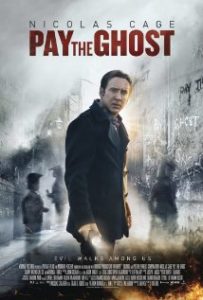 Okay, the next Netflix Streaming special for Halloween is: Pay the Ghost, starring Nicolas Cage.
Okay, the next Netflix Streaming special for Halloween is: Pay the Ghost, starring Nicolas Cage.
Pay the Ghost is based on a novella by Tim Lebbon. A young child is abducted on Halloween, without a trace. His grieving parents and the police search for him fruitlessly for almost a year. Then, as Halloween approaches the following year, strange and unexplained events lead them to believe that their son… and others… may have been stolen away by a supernatural entity. They also learn there may be a chance to bring him back.
I guess I’m going to keep going against the grain of the Rotten Tomatoes consensus and say I liked this one, more than the much-higher-rated Hush which I gave my impressions on yesterday. The critics hated this one, and it admittedly has a bit of the “made for TV” (or direct-to-video / streaming) vibe to it. Makeup and hair dye notwithstanding, Nicolas Cage has trouble looking like the younger father he’s supposed to be in this show. Some of the supernatural events are inexplicable and inconsistent, and feel like they were just tossed in as an afterthought. There were some conflicts between characters that were ripe opportunities for development, but were quickly resolved or glossed over. So yeah, I get why the critics rip on this. Although, glancing through the summaries, it seems like many of of them just wanted to criticize Cage. There were lots of missed opportunities and problem areas here.
Still, in spite of the problems, I liked the story. I guess I can compartmentalize pretty well and ignore bits and pieces of suck if I like the overall show. I did. I suspect that I would enjoy the novella even more, and that may the foundation that gives the film its buoyancy. It’s creepy, the evil has a very cool backstory and reason, and the characters are interesting. It’s non-rated for content, but would probably be somewhere around PG or PG-13 rating. We found it a worthy option for Halloween viewing. 🙂
Filed Under: Impressions, Movies - Comments: Comments are off for this article
Halloween Film Impressions: Hush
Posted by Rampant Coyote on October 12, 2016
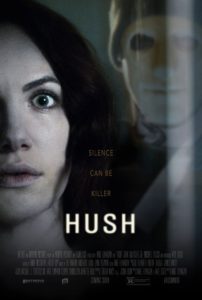 Okay, another Netflix-streaming horror movie… Hush.
Okay, another Netflix-streaming horror movie… Hush.
Madison is an author who has been deaf since her teenage years lives out in the middle of nowhere in a cottage in the woods. A psycho killer discovers her, realizes she’s deaf, and basically lays siege on her home all night, psychologically torturing her before killing her, taking full advantage of her weakness.
I understand the film’s gotten rave reviews. 100% on Rotten Tomatoes (granted, not a whole lot of professional reviews, but still…) And yeah, since that’s a “positive or negative” thing, I’d have to say my own feelings towards the movie are generally positive. We were entertained.
But I also felt it was a bit… I dunno… formulaic? Paint-by-numbers? Granted, Madison’s deafness is a pretty significant addition to the mix, coloring everything that happens. And it’s fairly well-executed. But for me, it was also pretty predictable from start to finish. And my wife was really, really bugged by the fact that this lady has windows EVERYWHERE and no curtains whatsoever. I mean, yeah, she lives in the middle of the woods, so it’s not like privacy would be that big of a concern, but still…
Bottom line: An okay psycho-killer horror movie with an interesting up-front twist.
Filed Under: Impressions, Movies - Comments: Read the First Comment
Star Citizen: Squadron 42 Delayed “Indefinitely”
Posted by Rampant Coyote on October 11, 2016
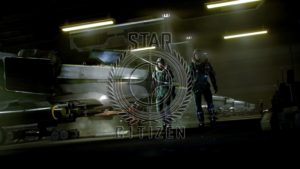 So this happened… (it looks like they changed the title since yesterday, because “indefinitely” is such a crude term… “until some future undefined date” is exactly the same thing but sounds less like “never.”)
So this happened… (it looks like they changed the title since yesterday, because “indefinitely” is such a crude term… “until some future undefined date” is exactly the same thing but sounds less like “never.”)
Forbes: Star Citizen’s ‘Squadron 42‘ Single Player Campaign Delayed Until Some Future Undefined Date
I wish I could say I’m surprised. I can only say I’m disappointed. Squadron 42 was the reason I backed the game. I’m not much of a multiplayer gamer anymore. The MMOs burned me out, maybe. Multiplayer is too demanding of my time, requiring I devote a chunk to it at one sitting. I don’t feel like doing that very often. (Not, a small period of time allocated to a game that somehow magically stretches to a 2-hour session… I don’t know how those happen, but I didn’t plan on it!)
I was really looking for a new Wing Commander. I don’t know why. I can’t say I was a big fan of Starlancer, and that looked to be a spiritual successor to the series. There have been several games (many indie) which have descended from that concept, and play pretty well. But still, I was pretty excited to see what the man himself, Chris Roberts, could do with a big budget big ideas.
As it turns out, it’s the Strike Commander saga all over again, but with no end in sight. Okay, yeah, a lot of you may not know about that one. It was at attempt to turn Wing Commander into a real-world flight sim after the release of Wing Commander 2. It was jokingly referred to as a “Perennial trade-show favorite,” long-delayed by the standards of the early 1990s. Not much by today’s standards, really. And yeah, I know… glass houses, throwing rocks… where the heck is Frayed Knights 2 already…
Ah, well. I got a Squadron 42 t-shirt out of it. And it wouldn’t be the first game that I was looking forward to which failed to materialize. Just the first one I ponied up full AAA price for. But hey – that’s the risk with crowdfunding, right? I knew the risk, I took the chance, and sometimes I find my faith is misplaced. Probably. At least in anything close to the promised time-frame, but I also expected that.
Hey, there’s still a chance that something will come of it. That, or lots of excuses as to why it was unimportant, why the multiplayer game is all I ever need (whatever state it is finally released in) and is essentially the same thing I thought I was getting in the single-player mode, and how everybody was really only interested in the online game anyway and nobody bought the game for the single-player Squadron 42 anyway.
/Sigh.
Filed Under: Crowdfunding, Space Sims - Comments: Read the First Comment
More Crowdfunding Projects: Wasteland 3 and Magellan
Posted by Rampant Coyote on October 7, 2016
Okay – as always, I have no control over these, your own risk, etc. All I can say is both of these groups have solid track records.
First of all: InXile is crowdfunding Wasteland 3. Besides being a choice-heavy, story-heavy post-apocalyptic turn-based roleplaying game like its predecessor, the next one promises multiplayer and a better dialog system. Yeah. I’m there. They are almost to their funding goal already, so it’s definitely happening. You probably already know what you are in for here. If not, check out Wasteland 2.
Next up – my friends over at Arrowstorm are crowdfunding a new movie. Now that the Mythica series is wrapping up, they’ve got a sci-fi “near-future thriller” film they are working on called Magellan, which is now in crowdfunding. It’s also very close to its goal, which is really just part of the post-production budget, as the film is now “largely complete.” Mythica veterans Matthew Mercer and Nicola Posener lend their voices to the film as the AI. It looks interesting… with some possible shades of Interstellar and 2001: A Space Odyssey.
Anyway, I thought I’d point these out in case you weren’t aware.
Filed Under: Crowdfunding - Comments: Comments are off for this article
Movie Impressions: Devil
Posted by Rampant Coyote on October 5, 2016
 October is the month my wife and I try to binge on the scary movies. But some years, “binging” might mean only three or four films.
October is the month my wife and I try to binge on the scary movies. But some years, “binging” might mean only three or four films.
One of the shows this year was “Devil.” It’s a 2010 film that mostly takes place in an elevator. It’s based on a story by M. Night Shyamalan, and co-produced by the same. Many years ago, that would have been considered a mark of quality. Now, it’s … not. More like a warning.
However, in this case, he didn’t direct it, and it’s … well, neither good nor bad. It’s okay. In a nutshell, it’s Agatha Christie’s “And Then There Were None” with a supernatural horror twist. Several people are trapped in an elevator. Several others are trying to help them escape. One person may be the Devil in disguise, tormenting his victims before killing them and dragging their souls to Hell.
And… that’s pretty much it. We kinda liked it. It’s only on Netflix for about ten more days, so now’s the time to give it a shot before it disappears from the roster, if you feel so inclined.
Filed Under: Movies - Comments: 4 Comments to Read
Rocksmith Celebrates its Birthday with a New Edition
Posted by Rampant Coyote on October 4, 2016
This week, the Ubisoft Rocksmith team celebrates the anniversaries of both Rocksmith and Rocksmith 2014. It’s been five years since the release of the original game (it was originally console-only), and about three years since the 2013 release of the sequel.
The original release was a genuine success for a new idea with new technology. They were very cautious about releasing it as an educational tool, and so it was marketed a bit like a Guitar Hero where you use a real guitar. Much more like a game. The technology had a lot more flaws, the flow could get dang annoying, and the original song pack was not super-exciting. A few DLC packs later, though, and it had a pretty decent library.
Then in October 2013, the sequel was released. You know, labeled Rocksmith 2014 because it was released in 2013. Marketing.
 Rocksmith 2014 fixed almost all the problems in the first game. DLC became a weekly event, and has been going strong for three years, with short breaks for holidays. They are up to nearly 900 songs now, which is impressive no matter how you look at it. Serving both bass and six-string guitars, and providing note-perfect charts for all the guitar parts (and sometimes guitar substitutions for other instruments), it’s a fantastic practice tool. It’s most popular features are “Learn a Song” – a digital songbook with ramping difficulty level all the way up to a full chart (and beyond, requiring you to play from memory) – and the “Riff Repeater” which allows you to practice parts of a song, varying the speed and completeness of the charts so you can work your way up to perfection. The software also has lessons for learning various techniques, from the extremely basic (how to hold a guitar) to advanced (like tapping). It has a number of arcade-style games for practicing those techniques; a tone customization library to experiment with simulated amplifiers, cabinets, and effects; a competitive leaderboard system with four different skill levels so everyone can (kinda) compete; two-player modes; and a “session mode” where you can just jam away.
Rocksmith 2014 fixed almost all the problems in the first game. DLC became a weekly event, and has been going strong for three years, with short breaks for holidays. They are up to nearly 900 songs now, which is impressive no matter how you look at it. Serving both bass and six-string guitars, and providing note-perfect charts for all the guitar parts (and sometimes guitar substitutions for other instruments), it’s a fantastic practice tool. It’s most popular features are “Learn a Song” – a digital songbook with ramping difficulty level all the way up to a full chart (and beyond, requiring you to play from memory) – and the “Riff Repeater” which allows you to practice parts of a song, varying the speed and completeness of the charts so you can work your way up to perfection. The software also has lessons for learning various techniques, from the extremely basic (how to hold a guitar) to advanced (like tapping). It has a number of arcade-style games for practicing those techniques; a tone customization library to experiment with simulated amplifiers, cabinets, and effects; a competitive leaderboard system with four different skill levels so everyone can (kinda) compete; two-player modes; and a “session mode” where you can just jam away.
I had decades of pretty much zero progress from being an “advanced beginner” at a guitar. It all came down to practice (or lack thereof). I’d get back into it for about two or three weeks every year, telling myself that THIS TIME I’d stick with it. I’d recover some calluses, recover my skill back to my previous playing ability, and… that’d be it. Same time next year. I’d done a little bit more with Rock Band 3 with a custom MIDI guitar controller (which was okay), and with the original Rocksmith (which was better). With the release of Rocksmith 2014, I committed to practicing at least a little bit daily. Sometimes it was only 10 or 15 minutes, but on the average it was closer to 40 minutes of daily practice. Still nowhere near what I should be doing to really, truly “get good” at the guitar. But while lately I’m more of an “every other day” kinda player, I’ve clocked about 600 hours into the game, plus a fraction of that offline / unplugged.
It worked. I have a tough time remembering what I was like when I first started, aside from being completely incapable of what I’m doing now. No, I’m nowhere near being able to melt faces with my shredding skills yet. I’m still very much an “intermediate.” But the difference between what I can do now versus what I could do then is huge… and it’s been (almost) all Rocksmith. So it’s not really a question of “does it work?” so much as “how well does it work?” That’s harder to quantify, but the answer is, “pretty good.” Naturally, quality personalized instruction is impossible to beat, but even with that, it still comes down to practicing a LOT. Rocksmith 2014 makes that a lot more fun and efficient.
And now they’ve released a new edition of the game: “Rocksmith 2014 Remastered Edition.” Not a sequel (yet), but a new edition. It’s out in stores this week for the people who haven’t tried it yet. Maybe they were waiting to find out if it really works or not. Well, three years later, they’ve got a ton of success stories. Anyway, new players will enjoy some new features and a lot of usability tweaks. Nothing gigantic, but they address some key issues. Mine was the lack of having multiple “playlists” – just favorites and everything else. That’s been addressed, and I can’t wait to set up my custom playlists! The Riff Repeater mode has enjoyed a number of usability tweaks to make it more efficient. Menu and mode navigation has been cleaned up and streamlined. Nothing earthshaking, but good enhancements.
The new edition also includes six new songs packed into the starting library:
- “Three Little Birds” by Bob Marley & The Wailers
- “Suspicious Minds” by Elvis Presley
- “Some Nights” by FUN.
- “I Want You Back” by Jackson 5
- “Hey Ya!” by Outkast
- “Drops of Jupiter” by Train
The thing that strikes me is that they are going for a breadth of styles here. While maybe not strictly “rock” they are at least “rock adjacent.” I’m pretty sure the goal was to sweeten the pot a bit for more diverse musical tastes. I can’t complain. I like all of the songs, though none are going to be at the top of my practice list for a while.
The code updates are free updates to all Rocksmith 2014 owners, effective immediately. (A downside for some is that it makes unofficial “custom” DLC no longer work. Not a big deal on my end.) So we all get the Remastered Edition, free! Yay! The new songs are only free for new buyers… existing owners can purchase it as a DLC pack.
I would expect this will be the final feature update for RS2014. Next up… a sequel? Who knows? As far as I’m concerned, if the Ubisoft guys were to roll up the shop tomorrow and call it quits, I’d be sad, but I’d probably still be playing it in 2024.
Filed Under: Guitar Games - Comments: Comments are off for this article
What is the Pulp Aesthetic?
Posted by Rampant Coyote on October 3, 2016
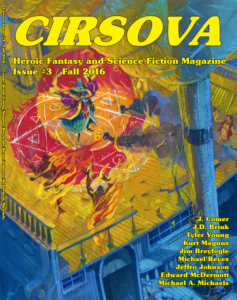 Misha Burnett writes a bit about what, in his mind, represents the “Pulp Revival Aesthetic.” I’ve read a bit about this from various corners over the last year. In part, I was trying to educate myself a bit after hearing some of the bickering in SF literary circles. And the fun part was that in exploring it, I became fascinated by it. This is great stuff.
Misha Burnett writes a bit about what, in his mind, represents the “Pulp Revival Aesthetic.” I’ve read a bit about this from various corners over the last year. In part, I was trying to educate myself a bit after hearing some of the bickering in SF literary circles. And the fun part was that in exploring it, I became fascinated by it. This is great stuff.
But of course, nobody quite agrees what the pulp aesthetic is, which makes it even harder for people to proclaim a revival. This is in no small part because the pulps themselves did not adhere to any particular standard or formula (Lester Dent’s formula notwithstanding). Quite simply, they printed what would sell magazines, tempered by the preferences of their editors. In that, they were no different from today. The only real difference was that they came out in a time where they weren’t competing with so many other entertainment media, so their stories reflected the tastes of the common man.
Interestingly enough, Dean Wesley Smith and others contend that many television shows have embraced the pulp fiction “formula.” At least the successful ones. So in that way, I guess it’s just jumped media. In the meantime–and perhaps the reason we’ve had calls for a “revival” every couple of years since at least 2010–science fiction has survived long enough to have gained some status and validation in the literary community, and a good chunk of it is being written specifically to please those critics. And it does, and gets a share of the limelight. It’s often well-written stuff, and might even be entertaining, but the latter seems to take a lower priority than the former. (Yes, we’re getting those same arguments about video games now, too… whether or not it is important if a game is actually “fun.”) But do those titles fairly represent what’s happening in science fiction? Thanks to the indie revolution, there’s a hell of a lot coming out each year, and a chunk of that arguably embraces the pulp aesthetic reasonably well.
Assuming we can agree on what that aesthetic is. Which might mean that it’s not really needing a revival, so much as experiencing a resurgence. Going back to Misha’s post… since I linked to it and everything… I think many of the points are just “good storytelling,” the approach learned via survival of the fittest during the pulp era. Others elements are applicable to broad but not universal sub-genres, like the pulp adventure stories. Violence, for example, was far from universal in pulp stories, even in science fiction and fantasy. In a lot of science fiction, the protagonist had to think their way out of the problem, although the threat of violence (or at least some kind of peril) might have hung over their head. But if the swords or guns had to start flashing, well, the bad guy had it coming.
Building on what Misha said (exceptions notwithstanding), I’d add “plot-driven stories” to elements of the pulp aesthetic. While pulp stories may have interesting characters, they aren’t character studies. The characters go through a wild ride though twisty, turny plots. You want interesting characters (or favorite characters) to see how they managed to navigate it.
Also – building on the concept of “classical romance” which generally involved heroism, adventure, and mystery in exotic places or times – I’d suggest that the pulp aesthetic includes “lurid spectacle.” Lester Dent insisted on having those elements in his Master Plot Formula – an exotic location, murder method, villain’s plan, etc. At least one, preferably two or more. Science Fiction and Fantasy almost have exotic locations sewn up… except where they’ve become so common in the genre they no longer feel exotic. A Middle Earth look-alike no longer feels exotic. A pulp story should have a bit of the spectacle, some unusual and unique characters, settings, or plot elements.
If there is anything else… I’d say the pulp aesthetic is “not overly polished.” And I mean how I phrase it. These stories were written and edited fast. They had rough edges. That’s part of their character and charm. That’s not to say they are unpolished, unfinished, or full of mistakes. Or that they are lacking spectacular turns of a phrase or layers of meaning. But they do have something of … I dunno… more of the feeling of oral storytelling, maybe. A straightforwardness. It’s there to spin a yarn, maybe get under your skin a bit, and then get out of the way for the next story.
Does this completely describe the pulp aesthetic? Probably not. Probably because it defies a any attempt at rigid definition. But I do feel that with the indie revolution, we’re getting a bit of a resurgence of that aesthetic today. Unfortunately, finding it is another trick… there’s an awful lot of crap out there today, and while a little roughness can make for excellent pulp, crap really doesn’t. Even pulp had a layer of overworked, underpaid editors sifting through the slush and cleaning up the final product. Good luck.
Filed Under: Short Fiction, Writing - Comments: 3 Comments to Read
Looking Forward: Optimistic Speculation Wanted
Posted by Rampant Coyote on September 30, 2016
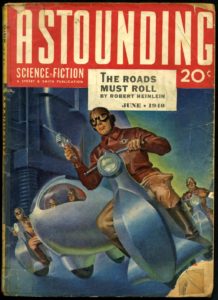 I think I’ve noted my somewhat recent delves into reading pulp fiction from the early-to-mid 20th century. I can’t say I’m reading it extremely broadly… it’s a huge area, and I have my favorite authors. Like every field, Sturgeon’s Law applies: 90% of everything is crap. Theodore Sturgeon oughta know. He was a pulp writer, too.
I think I’ve noted my somewhat recent delves into reading pulp fiction from the early-to-mid 20th century. I can’t say I’m reading it extremely broadly… it’s a huge area, and I have my favorite authors. Like every field, Sturgeon’s Law applies: 90% of everything is crap. Theodore Sturgeon oughta know. He was a pulp writer, too.
One thing I have learned is that the preconceptions of the “style” of the science fiction of the pulp era are way off-base. Most of the time, they are based not on the stories themselves, but on just the covers of the magazines. And… okay, the magazine covers were pretty wild. Or early SF movies. Or the movie posters from early SF movies. There’s this view that Science Fiction was this vapid genre of rocket ships, lantern-jawed heroes, bug-eyed monsters, and damsels in distress. Yes, you get that. And yes, they are often lurid and action-oriented. Pulp’s heyday was in the era before Television became common… and certainly before video games. It filled that niche.
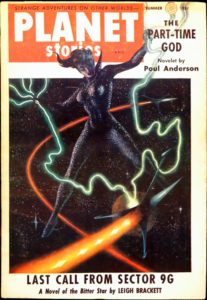 But stylistically, the stories ran the gamut. At least the better stuff did. Even in Fish Men of Venus, it wasn’t the Fish Men who were the true bad guys, but a close human friend and ally who proved to be a betrayer. The future isn’t always optimistic. The heroes may have issues. The villains have issues. A gun of some kind or at least a balled-up fist might be required before the end of the story, but they usually aren’t the solution to anything but a temporary problem. The heroes weren’t always heroic… sometimes they were just trying to redeem themselves. The better SF of the era might feel a little quaint on the technology side, but still packs a punch, still asks interesting questions, and still holds up a mirror to our society today.
But stylistically, the stories ran the gamut. At least the better stuff did. Even in Fish Men of Venus, it wasn’t the Fish Men who were the true bad guys, but a close human friend and ally who proved to be a betrayer. The future isn’t always optimistic. The heroes may have issues. The villains have issues. A gun of some kind or at least a balled-up fist might be required before the end of the story, but they usually aren’t the solution to anything but a temporary problem. The heroes weren’t always heroic… sometimes they were just trying to redeem themselves. The better SF of the era might feel a little quaint on the technology side, but still packs a punch, still asks interesting questions, and still holds up a mirror to our society today.
Most stories could be considered optimistic. The worlds aren’t overly oppressive or dark. The hero wins in the end… depending upon what he was struggling for. Maybe (usually) not the goal he was struggling for, but in the end, he (or, admittedly less frequently, she) pulls off a victory. We get a reasonably happy ending. Exceptions abounded. But people weren’t buying this stuff to get depressed about the future. They were buying it and reading it for escape, adventure, and inspiration, with a bit of nuance and a chance to think about some really unusual questions.
Years later, the stereotype stuck.
There’s been a trend over the last 25 years to go darker, grittier, and to push back against a stereotype of older science fiction. I first became aware of it with Cyberpunk, but it didn’t start there. In an article in Time, Graeme McMillan believes the trend may be closer to 40 years:
Such pessimism and fascination with future dystopias really took hold of mainstream sci-fi in the 1970s and ’80s, as pop culture found itself struggling with general disillusionment as a whole. Certainly, at the time, there was much to be disillusioned about; the optimism and hope of the late ’60s fell apart as the hippie dream of a new Age of Aquarius came face to face with a reality filled with an unpopular war, civil rights riots and all-new reasons to feel suspicious of and disappointed in those in authority, so it’s hardly any surprise that the future became a darker, less inviting place.
Now, I do enjoy dystopian, post-apocalyptic, darker, grittier stuff. I love Cyberpunk. I like some stories that serve as much of a warning as to what we might become as those with a more optimistic view of the future. Variety is the spice of life. But, like McMillan says, it can get to the point where it feels stuck in a rut.
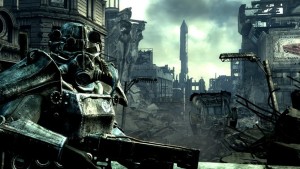 Since I have much more experience in video games, I have to agree that it’s pretty prevalent in gaming, too. Maybe artists prefer building nasty, gritty, dirty environments more than the clean and brightly-lit ones? Or is that just the designers? Whatever the case, the future is certainly grim, dark, and gritty in many video games, and it seems like that’s true in the biggest games. But is there a causal relationship there, and which way does it go?
Since I have much more experience in video games, I have to agree that it’s pretty prevalent in gaming, too. Maybe artists prefer building nasty, gritty, dirty environments more than the clean and brightly-lit ones? Or is that just the designers? Whatever the case, the future is certainly grim, dark, and gritty in many video games, and it seems like that’s true in the biggest games. But is there a causal relationship there, and which way does it go?
It’s not that the darker worlds are more exciting or dangerous. They are not. Optimistic worlds are rarely a paradise, and can be as full of peril and conflict as any other. Fans of Star Wars or The Martian know better. For that matter, after The Martian (book and movie), audiences now know that “hard” science fiction can be every bit as fun and exciting as the more fanciful stuff. Not to mention popular.
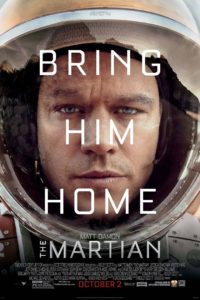 If I had to pick a preference (and why would someone force me to do that? Why? Why?), I would probably choose the stuff that inspires. We need that. It’s important to look up, to catch a vision of potential, and to work towards something, and not just away from something. Something hopeful, not just something that’s disturbingly believable. It can be harder to write… to imagine solutions and not just problems. Because then, as with all art, that can fire the imagination and encourage others to imagine solutions as well.
If I had to pick a preference (and why would someone force me to do that? Why? Why?), I would probably choose the stuff that inspires. We need that. It’s important to look up, to catch a vision of potential, and to work towards something, and not just away from something. Something hopeful, not just something that’s disturbingly believable. It can be harder to write… to imagine solutions and not just problems. Because then, as with all art, that can fire the imagination and encourage others to imagine solutions as well.
In fact, there’s an argument that without the arts doing exactly that in the 20th century, we never would have made the progress we did in the space program, landing men on the moon and sending probes to the other planets in the Solar system. AtlasObscura has an article about how the arts influenced space exploration – particularly artists impressions of other worlds and potential space missions – may have made a huge difference not just in the public, but also inspired scientists and helped unlock new ideas. (Again, I wonder how much of a boost The Martian has been for promoting Mars projects).
Andrew Liptak on Flipboard also talks about the push to get back to optimistic science fiction in television. I didn’t think TV was struggling too hard with a lack of optimistic science fiction shows… but I’m not quite up to speed on TV these days, and while speculative fiction has really grown in TV in the last decade, admittedly a lot of it is paranormal, fantasy, superhero, etc.
Some authors have pushed to restore a bit more optimism to science fiction, as well. From Neil Stephenson (best known for his wild, fun Cyberpunk novel, Snow Crash) to lesser-known authors, many have made calls to put the optimism, hope, and inspiration back into science fiction. Not that it ever entirely left. Not by a long shot. But I think these calls were as much to call attention to what’s already being done as to help generate more, in an effort to balance the scales somewhat.
And so I guess I’m adding to the call. Not that I dislike the other stuff. I simply want more variety. I just want to see more games, books, and movies that tackle the optimistic side of science fiction. I want stuff that inspires me.
Filed Under: Books, Mainstream Games, Movies, Short Fiction - Comments: 3 Comments to Read
